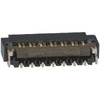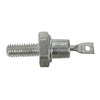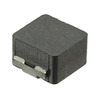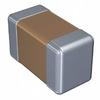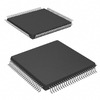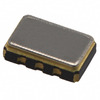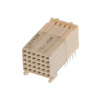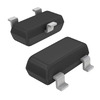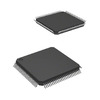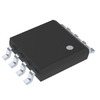Comprehensive Guide to the nRF9160 Development Kit and Its Applications
Discover the nRF9160 Development Kit, a powerful tool for creating LTE-M and NB-IoT applications with ease. This guide covers its features, uses, and everything you need to get started.Catalog
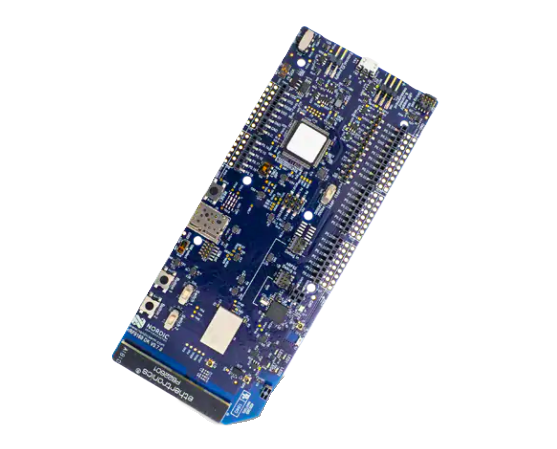
Overview of nRF9160 Development Kit
The NRF9160 Development Kit (DK) is designed to support the nRF9160 System-in-Package (SiP) for LTE-M and NB-IoT applications, offering a complete, versatile solution for developers. Equipped with an nRF52840 board controller, this development kit can also enable Bluetooth® Low Energy (LE) gateway setups, making it adaptable for different IoT configurations. Its dedicated LTE-M and NB-IoT antennas are compatible with global networks, which makes it convenient for widespread deployment across diverse locations. The kit mirrors the certification coverage of the nRF9160 SiP itself, giving you confidence that your project can meet regulatory requirements across regions.
The kit is built with flexibility in mind, providing both a nano/4FF SIM card slot and an MFF2 SIM footprint. This setup allows you to choose between plug-in and soldered (e)SIMs, depending on your specific project needs. For convenience, the kit includes an iBasis SIM card that has global coverage and comes with 10 MB of preloaded data, allowing you to start testing right away.
Key Features of nRF9160 DK
Certification Coverage
The nRF9160 DK provides the same certification coverage as the nRF9160 SiP, making it compatible with global standards for LTE-M and NB-IoT applications. This compatibility allows you to develop applications that meet diverse regulatory requirements without extra certification effort.
nRF52840 Board Controller
An nRF52840 board controller is included, enabling Bluetooth® Low Energy (LE) gateway capabilities. This feature expands the development kit’s use, allowing you to create applications that combine cellular IoT with Bluetooth LE communication, adding versatility to your projects.
LTE-M, NB-IoT, and GNSS Antennas
The development kit comes with dedicated antennas for LTE-M, NB-IoT, and GNSS, each with SWF RF connectors. These antennas ensure that your applications can access cellular connectivity and location services without needing additional hardware adjustments.
SEGGER J-Link OB Programmer/Debugger
The SEGGER J-Link OB programmer and debugger offers an integrated, easy-to-use programming and debugging experience. With this tool, you can quickly load and test code, helping you save time on development and troubleshooting.
Power Measurement Pins
Pins are included for measuring power consumption, which works well with Nordic's Power Profiler Kit II. This feature allows you to monitor and optimize the power usage of your application, which can be especially useful for battery-powered IoT devices.
User-Programmable LEDs and Buttons
The nRF9160 DK features four user-programmable LEDs, two buttons, and two switches, giving you interactive control options for your application. These components make testing and prototyping easier by providing simple ways to interact with the system.
Flexible Power Supply
The kit supports a 3.0–5.5 V supply from external sources or 5 V from USB, giving you multiple power options to fit your setup. This flexibility helps you power the device conveniently, whether you are working at a desk or deploying it in the field.
USB Power Supply
In addition to external power, the nRF9160 DK can be powered directly from USB. This feature provides a straightforward option to power the board when testing or debugging, making the setup process simpler.
Hardware Drawings of nRF9160 DK

Block Diagram of nRF9160

nRF9160 Specifications
Technical specifications, features, characteristics, and components with comparable specifications of Nordic Semiconductor ASA nRF9160 DK.
| Type | Parameter |
| Lifecycle Status | ACTIVE (Last Updated: 2 days ago) |
| Factory Lead Time | 8 Weeks |
| Mount | Surface Mount |
| Mounting Type | Surface Mount |
| Package / Case | 14-TSSOP (0.173, 4.40mm Width) |
| Number of Pins | 14 |
| Weight | 57.209338mg |
| Operating Temperature | -40°C~85°C TA |
| Packaging | Tape & Reel (TR) |
| JESD-609 Code | e4 |
| Pbfree Code | yes |
| Part Status | Active |
| Moisture Sensitivity Level (MSL) | 1 (Unlimited) |
| Number of Terminations | 14 |
| ECCN Code | EAR99 |
| Terminal Finish | Nickel/Palladium/Gold (Ni/Pd/Au) |
| Terminal Position | DUAL |
| Terminal Form | GULL WING |
| Peak Reflow Temperature | 260°C |
| Number of Functions | 1 |
| Supply Voltage | 1.8V |
| Base Part Number | TXS0104 |
| Pin Count | 14 |
| Output Type | Open Drain, Push-Pull |
| Number of Channels | 4 |
| Number of Circuits | 1 |
| Max Supply Voltage | 5.5V |
| Min Supply Voltage | 1.65V |
| Output Current | 50mA |
| Number of Bits | 4 |
| Propagation Delay | 4.6 ns |
| Quiescent Current | 14.4μA |
| Turn On Delay Time | 260 ns |
| Logic Function | Translator |
| Data Rate | 24Mbps |
| Interface IC Type | INTERFACE CIRCUIT |
| High Level Output Current | -20μA |
| Channel Type | Bidirectional |
| Low Level Output Current | 1mA |
| Supply Voltage1-Nom | 3.3V |
| Max Junction Temperature | 150°C |
| Ambient Temperature Range High | 85°C |
| Translator Type | Voltage Level |
| Voltage - VCCA | 1.65V~3.6V |
| Voltage - VCCB | 2.3V~5.5V |
| Features | Auto-Direction Sensing |
| Height | 1.2mm |
| Length | 5mm |
| Width | 4.4mm |
| Thickness | 1mm |
| REACH SVHC | No SVHC |
| Radiation Hardening | No |
| RoHS Status | ROHS3 Compliant |
| Lead Free | Lead Free |
Interface Specifications of nRF9160
The nRF9160’s modem firmware has built-in layers that manage LTE stack protocols, from the physical layer up to LTE stack layers L1-L3, IPv4/IPv6, TCP/UDP, and secure protocols like TLS/DTLS. This framework allows you to handle network communication efficiently, letting the modem take on the complexities of network connectivity so you can focus on developing the application layer.
The application processor interacts with the LTE modem through BSD secure sockets APIs, giving you a straightforward method to build in protocols like CoAP, MQTT, HTTP(S), and LWM2M, which are commonly used in IoT applications. This approach also simplifies adding a custom user application on top of these protocols, making the nRF9160 adaptable to various IoT projects.
Another advantage is that the nRF9160 LTE modem supports both traditional SIM and eSIM cards, and it’s flexible with installation methods—you can either plug in the SIM or solder it directly, depending on your needs. This flexibility helps streamline device communication, as the modem handles the SIM card power and communication independently, freeing you up from managing these technicalities directly.
Hardware Components and Drivers in nRF9160
| Interface | Controller | Driver/Component |
| ADC | on-chip | adc |
| CLOCK | on-chip | clock_control |
| FLASH | on-chip | flash |
| GPIO | on-chip | gpio |
| I2C(M) | on-chip | i2c |
| MPU | on-chip | arch/arm |
| NVIC | on-chip | arch/arm |
| PWM | on-chip | pwm |
| RTC | on-chip | system clock |
| RTT | Segger | console |
| SPI(M/S) | on-chip | spi |
| SPU | on-chip | system protection |
| UARTE | on-chip | serial |
| WDT | on-chip | watchdog |
Applications of nRF9160 Development Kit
Logistics and Asset Tracking
The NRF9160 DK is well-suited for logistics and asset tracking applications, enabling you to monitor the location and status of assets over LTE-M and NB-IoT networks. With its GNSS capabilities, you can build solutions that help track inventory or shipments with reliable real-time data.
Smart City and Smart Agriculture
The development kit is useful in smart city and smart agriculture applications. It enables you to create sensors and systems that can monitor conditions and relay information across large areas, supporting developments in areas like environmental monitoring, resource management, and automated systems.
Predictive Maintenance and Industrial Monitoring
With the nRF9160 DK, you can implement predictive maintenance and industrial monitoring solutions. The kit allows you to build devices that continuously monitor equipment or infrastructure, providing insights that help prevent costly downtimes by detecting issues before they become serious.
Wearables and Medical Devices
The nRF9160 DK supports wearables and medical applications that require reliable connectivity and low power consumption. You can develop wearable devices that gather health data or provide remote monitoring, creating solutions that enhance patient care or track vital information remotely.
Manufacturer Background for nRF9160
Nordic Semiconductor, the developer of the nRF9160, specializes in wireless solutions for IoT, especially known for low-power, short-range, and cellular IoT applications. Renowned for its work with Bluetooth Low Energy, Nordic has led innovations that make wireless IoT solutions both reliable and power-efficient. The company’s expertise spans multiple wireless protocols, including ANT+, Thread, and Zigbee, enabling it to serve diverse wireless needs.
With the nRF9160, Nordic brings its experience to cellular IoT, supporting LTE-M and NB-IoT connectivity. This allows for extended range communication over existing cellular networks, making IoT applications easier to deploy without added infrastructure, and providing reliable connectivity while conserving power.
About us
ALLELCO LIMITED
Read more
Quick inquiry
Please send an inquiry, we will respond immediately.
Frequently Asked Questions [FAQ]
1. What is the nRF9160, and what does it offer?
The nRF9160 is a compact System-in-Package (SiP) that integrates the latest low-power LTE technology, advanced processing capabilities, and security features. It simplifies the development of cellular IoT applications by providing both connectivity and processing power in a single, easy-to-use package.
2. How can I program the nRF9160?
To program the nRF9160, start by opening the nRF Connect for Desktop software and launch the nRF Connect Programmer. Ensure the PROG/DEBUG SW10 switch (SW5 for earlier versions) is set correctly, then connect the nRF9160 DK to your computer with a micro-USB cable. Once connected and powered on, select your device from the list, and you’ll be ready to load and test your code.
3. What is the nRF Connect SDK?
The nRF Connect SDK is a versatile software development kit designed for building applications on Nordic’s wireless devices, including the nRF52, nRF53, and nRF91 Series. It provides a comprehensive set of tools, libraries, and samples, making it easier to develop, test, and deploy wireless applications across various Nordic platforms.
4. What’s the difference between NB-IoT and LTE-M?
NB-IoT and LTE-M are both low-power cellular technologies designed for IoT, but they differ in compatibility and network requirements. NB-IoT works with both 2G (GSM) and 4G (LTE) networks, while LTE-M only operates on 4G networks. LTE-M is backward-compatible with existing LTE networks, while NB-IoT uses a unique modulation method that requires specialized hardware. Both technologies are expected to expand to 5G networks in the future.
5. What frequency range does the nRF9160 support?
The nRF9160 supports frequencies ranging from 700 MHz to 2.2 GHz, allowing it to connect across a wide range of bands suitable for global LTE-M and NB-IoT applications.
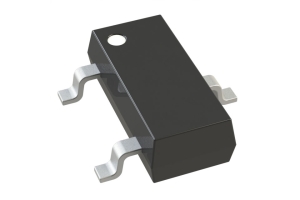
Beginner’s Guide to the BC817-40 Transistor
on November 5th

A Complete Overview of the MCP3008 ADC
on November 5th
Popular Posts
-

What is GND in the circuit?
on January 1th 2889
-

RJ-45 Connector Guide: RJ-45 Connector Color Codes, Wiring Schemes, R-J45 Applications, RJ-45 Datasheets
on January 1th 2462
-

Fiber Connector Types: SC Vs LC And LC Vs MTP
on January 1th 2056
-

Understanding Power Supply Voltages in Electronics VCC, VDD, VEE, VSS, and GND
on November 7th 1827
-

Comparison Between DB9 and RS232
on January 1th 1746
-

What Is An LR44 Battery?
Electricity, that ubiquitous force, quietly permeates every aspect of our daily lives, from trivial gadgets to life-threatening medical equipment, it plays a silent role. However, truly grasping this energy, especially how to store and efficiently output it, is no easy task. It is against this background that this article will focus on a type of coin cell battery that may seem insignificant on the...on January 1th 1699
-

Understanding the Fundamentals:Inductance Resistance, andCapacitance
In the intricate dance of electrical engineering, a trio of fundamental elements takes center stage: inductance, resistance, and capacitance. Each bears unique traits that dictate the dynamic rhythms of electronic circuits. Here, we embark on a journey to decipher the complexities of these components, to uncover their distinct roles and practical uses within the vast electrical orchestra. Inductan...on January 1th 1641
-

CR2430 Battery Comprehensive Guide: Specifications, Applications and Comparison to CR2032 Batteries
What is CR2430 battery ?Benefits of CR2430 BatteriesNormCR2430 Battery ApplicationsCR2430 EquivalentCR2430 VS CR2032Battery CR2430 SizeWhat to look for when buying the CR2430 and equivalentsData Sheet PDFFrequently Asked Questions Batteries are the heart of small electronic devices. Among the many types available, coin cells play a crucial role, commonly found in calculators, remote controls, and ...on January 1th 1514
-

What Is RF and Why Do We Use It?
Radio Frequency (RF) technology is a key part of modern wireless communication, enabling data transmission over long distances without physical connections. This article delves into the basics of RF, explaining how electromagnetic radiation (EMR) makes RF communication possible. We will explore the principles of EMR, the creation and control of RF signals, and their wide-ranging uses. The article ...on January 1th 1502
-

CR2450 vs CR2032: Can The Battery Be Used Instead?
Lithium manganese batteries do have some similarities with other lithium batteries. High energy density and long service life are the characteristics they have in common. This kind of battery has won the trust and favor of many consumers because of its unique safety. Expensive tech gadgets? Small appliances in our homes? Look around and you'll see them everywhere. Among these many lithium-manganes...on January 1th 1483
